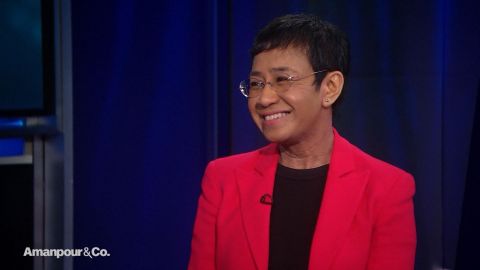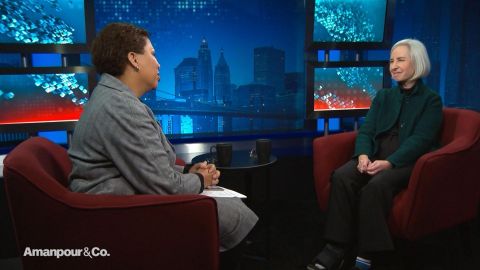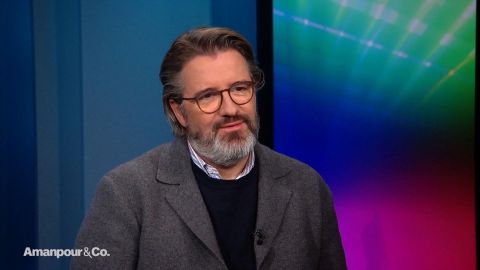Read Transcript EXPAND
CHRISTIANE AMANPOUR: I want to know first what inspires your art?
OLAFUR ELIASSON, ARTIST: Well, I was interested in, as a student, dematerializing. And that, I think, created a situation where the author or the view of the user of a museum will have to work. Is this now a work of art or is it — I mean, what am I looking at? And suddenly, the experience itself, one could argue, is the art work.
AMANPOUR: So, here is the experience we are having now. This is your latest big exhibit at the Tate Modern. There are a lot of very, very interesting rooms and the art goer really does have fun. Here, what would you say that is?
ELIASSON: Well, what it is, in fact, is Drizzling water. And I don’t know if you can see, there’s this sort of spectrum of — color spectrum like —
AMANPOUR: Yes.
ELIASSON: — like a little bit of a rainbow, one could say. And as we know, a rainbow, it really depends on the light, a drop, which is what is in the room, and then eye. So, when I look, that angle that creates the rainbow. But if I look away, obviously, the angle is not there. So, one could really argue that it’s a room with a rainbow once there are people there. If there are no people there, there is no rainbow.
AMANPOUR: Yes. Beside the tree in the forest if it drops and nobody is there, nobody hears it.
ELIASSON: And, obviously, it’s really also about the authority. I mean, who is important here. Is it the artist, is it the museum, is it the rainbow or is it the people who come? You know, so I was hoping to suggest, well, it is the thing or it is the engagement that creates the work. So, the rainbow for me is, obviously, is both of beauty and about a work of art but it’s also about once we see something, we also constitute it. We are not consumers. We are, in fact, producers if we dare to own it.
AMANPOUR: Oh, this is the fog. This is actually, for a lot of people who I have spoken to, a little bit scary, a little bit claustrophobic. That’s you obviously there. But we have to go through a room that we don’t know what’s in there, what’s not. Just that we know that it’s the fog room.
ELIASSON: Going through a room where you can’t see because it is densely full of fog, quickly you think, I’m lost. I have lost my vision. But it turns out that we are not as lost as we think because we start to use the ears, go into some kind of alert and we start to touch, you know, we hold our hands out. And it just means that what we think is our way of navigating or orienting is not something static. We can reorient, we can renavigate or we can recreate how we see the world.
AMANPOUR: This is a lot. Isn’t it inspired by your climate activism?
ELIASSON: For me it’s just like art that deals with the subject matter which happens to be environment. And here, there’s this — so, we have a lot of fear-based there. I mean, we see fear-based narrative especially from (INAUDIBLE) and from parts of the world where, you know, people are trying to promote change by sort of threatening. And I really trust the people to be able to react in a positive, a hopeful message, not as fear- based.
About This Episode EXPAND
Nima Elbagir gives a special report on abuse and exploitation within the Catholic church. Maria Ressa talks to Christiane about her work as CEO of Rappler and the importance of a free press. Artist Olafur Eliasson joins the program to discuss his new exhibit at London’s Tate Modern, and Martha Minow speaks to Michel about her new book “When Should Law Forgive?”
LEARN MORE


